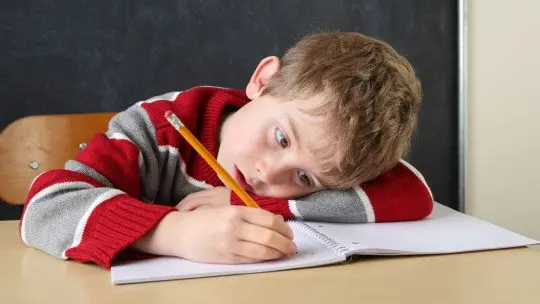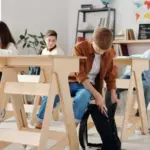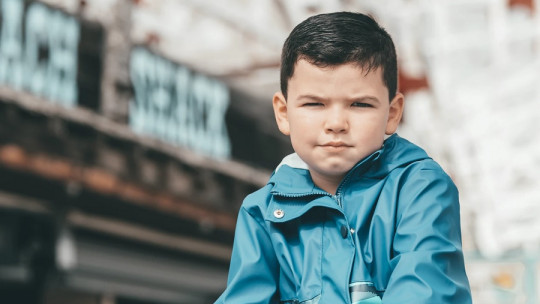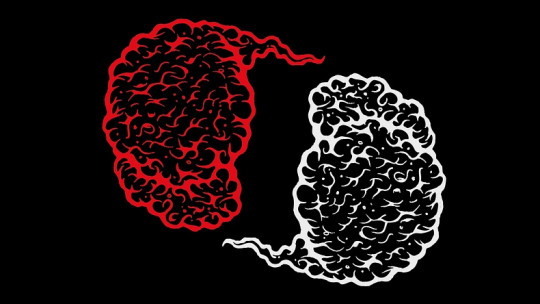
Children diagnosed with ADHD (Attention Deficit Hyperactivity Disorder) present a series of particular characteristics, which make their development, interactions, communication and evolution in a certain way.
Logically, each child is different, but knowing these basic characteristics can help us know how to treat a child with ADHD
In this article, in addition to presenting the profile of a child with ADHD, we explain some guidelines (and how to apply them) that will help us relate to them, improve their quality of life and improve their self-control and behavior, among others. others.
What is a child with ADHD like? Symptoms
Before offering some guidelines on how to treat a child with ADHD, in order to promote their development, facilitate their learning and the emergence of appropriate behaviors, improve their well-being, strengthen ties with them. We believe it is important to make a brief “x-ray” of the characteristics that children with ADHD may present.
For it, It is important to understand that each child is a world and that a diagnosis does not have to – nor should it – pigeonhole or label you in any way.
It is true, on the other hand, that ADHD, like all disorders, presents a series of characteristic symptoms that will manifest themselves idiosyncratically in each child. The key symptoms in ADHD are three: hyperactivity, impulsivity and inattention.
For its part, the DSM-5 (Diagnostic Manual of Mental Disorders) considers that ADHD can be of three types: with a predominance of inattention, with a predominance of hyperactivity or combined (with a predominance of both types of symptoms).
1. Hyperactivity
Let’s remember that there are ADD (Attention Deficit Disorder) and ADHD (Attention Deficit Hyperactivity Disorder). In the case of hyperactivity, this translates into a constant need to move
Parents often talk about their children with ADHD as “children who have an engine inside that never turns off” That is, referring to this symptom, these are children who are agitated, restless, with difficulties sitting or standing, etc.
2. Impulsivity
Impulsivity, another key symptom in ADHD, consists, broadly speaking, of the inability (or great difficulty) to reflect before acting. Thus, they are children who act on impulses, to whom It is difficult for them to think about things before doing or saying them with difficulties in waiting turns, impatient, etc.
Logically, all of this can be worked on, and like the rest of the symptoms, it is not something that defines them or “catalogues” them as such indefinitely. It is simply another characteristic of ADHD. Many times, as a result of this impulsiveness and this difficulty in waiting, Behavioral disorders appear associated with the disorder (or for some other reasons)
3. Inattention
Inattention, also present in many cases of ADHD (specifically, in the combined and inattentive subtypes), consists of difficulty maintaining sustained attention (concentration) for a certain period towards some specific stimulus.
Many times a deficit in selective attention also appears (ability to change the focus of attention), although what predominates is the deficit in sustained attention.
4. Interference
Finally, in order to diagnose ADHD, It is necessary that the aforementioned symptoms interfere with the child’s life and that they also appear in more than one context: for example at home and at school.
How to treat a child with ADHD
How to treat a child with ADHD? Well yes, normally, but if we want to adapt to him, empathize, understand him, enhance his learning and improve his quality of life, we must follow a series of guidelines. Here we propose some (although there are more):
1. Work on self-control
Self-control is a difficult area in children with ADHD, since, mainly due to their impulsivity, they have problems in relation to modulating their own actions. That is, it is difficult for them to control their actions appropriately, and they have difficulty reaching that sense of internal control that is so necessary many times.
Thus, a first guideline on how to treat a child with ADHD is to work with him on his self-control. How can we do it? Whether we are teachers, educators, psychologists, parents… here you will find two resources.
1.1. The turtle technique
The first tool that we propose is the turtle technique, which cIt consists of teaching the child to respond in front of the key word “turtle” (shrinking, closing his body, putting his head between his arms in a kind of imaginary shell…).
He will do this when he feels overwhelmed, angry or threatened, in order to be able to control his emotions and impulses when faced with environmental stimuli, for example.
1.2. Self-instruction training
Another useful technique to work on self-control is through self-instructions, which involve Help the child internalize the next steps before making a decision:
We can work with images or pictograms, for example through the “STOP” symbol (traffic sign).
2. Reinforce appropriate behavior
It is important, in relation to how to treat a child with ADHD, to also work on their behavior. For this there are different strategies. One of them is Recognize, reinforce and reward appropriate behaviors so that these increase.
3. Apply behavior modification techniques
Beyond reinforcing appropriate behaviors, we can also use different behavior modification techniques in order to also improve inappropriate behaviors (reducing them and replacing them with others).
We can do this through different techniques (whether at school, at home…), such as:
3.1. Time out
It consists of removing the child from the reinforcing context in which he or she is immersed (for example, the classroom or the playground), so that they “lose” the reinforcers (that maintain their problem behavior) temporarily, and can reflect on their inappropriate behavior. It is recommended to apply one minute of time out for each year of the child’s age.
3.2. Response cost
This technique involves the child losing some reinforcing object for him (or a token, in the context of a token economy), as a consequence of inappropriate behavior.
4. Avoid criticizing him in front of others
It seems pretty obvious, but sometimes it isn’t. Another guideline on how to treat a child with ADHD is the following: do not criticize her behavior, or speak badly of her, in front of other children.
It is important not to lower your self-esteem and don’t feel ashamed, since many times it is something they cannot control, or they simply have not been taught how to act better in an alternative way.
5. Avoid excessive use of punishment
Many times, punishment is of little use, because it does not teach the child alternative behaviors to inappropriate behavior. Besides, it is not easy to find a really effective punishment
That is why we must avoid its use with children with ADHD, and replace it with: reinforcing appropriate behaviors, using overcorrection (which does teach the child positive behavior), etc.
6. Explain the behavior expected of him/her
Another important guideline that we can use is the following: explain to the child what is expected of him, for example when he is at home and must do certain tasks, or in class, the park, etc.
Many times, they do not do it (or even act inappropriately) precisely out of ignorance, because No one has explicitly explained to them what is expected of them, and not because they don’t want to or don’t know
7. Describe your behavior, avoiding the verb “to be”
This is important not only in terms of interactions with him/her, but also in terms of possible school or psychological reports that we must carry out on a child with ADHD.
So, The ideal is to describe his/her behavior (for example “his/her behavior has been inappropriate…”), and not describe him/her (for example “he is a rude child…”).








